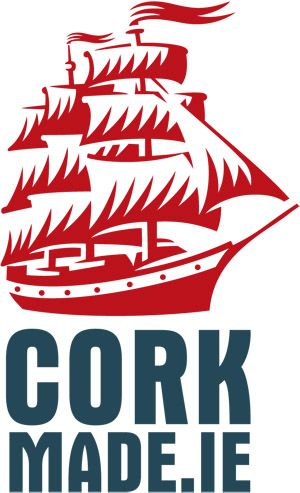In the early 1900s, with a poor national road network rail travel was a major part of the Irish economy for the transportation of passengers and freight.
Following the 1916 Easter Rising, the British government assumed direct state control over twenty-eight different railway operating companies.
When British government control ended in August 1921, the railway companies refused to be bound by the agreements on wages, improved working conditions and union membership made with the workers in the intervening period and there was the prospect of widespread railway strikes across Ireland for 1922.
Along with the threat of industrial action the civil war began in June 1922 and the country was in turmoil, however in just a matter of weeks, the National Army managed to gain control over the majority of urban areas. In response, the anti-Treaty IRA leadership restructured their forces into small active service units, employing hit-and-run tactics to target specific objectives with a specific focus on the railways.
As a result of the effective campaign of the anti-Treaty IRA forces much of the country’s rail and transport networks were closed down, communications were cut and the fledgling economy overseen by the provisional Government was virtually halted.
An urgent response was needed and in September 1922 the government took a direct approach by sidestepping the railway companies who were stymied by the threat of industrial action and directly approached the National Union of Railwaymen for assistance in forming a specialised force as a unit of the National Army tasked with safeguarding the railway network. The union agreed and the Railway Protection, Repair and Maintenance Corps was established.
Under the command of Colonel Charles Russell recruitment began immediately from the corps Dublin headquarters at Wellington Barracks, (Griffith Barracks) and from rail stations at Clonmel, Dundalk, Glanmire (Cork), Limerick, Mullingar and Thurles.
Within the Corps, soldiers were divided into two categories: Class A, consisting of railwaymen, and Class B, comprising regular National Army soldiers. Class A soldiers were responsible for operating and maintaining armoured trains and rail-mounted armoured cars, whereas Class B soldiers were assigned to manning blockhouses and guarding stations. Both groups also collaborated in repairing damages to tracks and structures.
Although both categories were subject to military discipline, Class A soldiers benefited from certain advantages. They received railway rates of pay and enjoyed favourable working conditions. Additionally, they had social insurance and access to trade union officials.
Highlighting the significance of safeguarding the railway network to protect the economy the Corps reached its peak in June 1923 with a total strength ranging of up to 5,000 officers and men, a considerable number of whom were former railway employees.
Tasked with protecting the rail network the newly established corps operated patrols in a fleet of armoured trains that had already been built in 1920 at Inchicore and also specially modified Lancia armoured cars mounted on rail wheels. The Corps also established a network of fifty blockhouses along the railway system. These blockhouses were small roughly built concrete fortifications strategically positioned to allow the defenders to fire upon attackers while remaining sheltered.
Around 1920, the British had constructed nine armoured trains at Inchicore Works. These trains boasted diverse configurations, but typically featured an armoured locomotive and tender, along with armoured wagons designed to accommodate troops with gun ports for rifles and machine guns. Additionally, the trains included tool wagons, field kitchens and flat cars for significant repairs. Some of the trains were also equipped with a 25-ton crane to assist with rail repairs, while bunk carriages could be attached if the situation demanded.
We believe that there were up to fifty Lancia open-top armoured cars (left by British Forces) of which seven were modified for railway protection duties. At the GS&WR (Great Southern and Western Railway) Inchicore Works, Dublin, skilled railway workers widened the Lancia’s axles to fit the Irish railway gauge of 5ft 3” and replaced the road wheels with rail wheels and fitted an armoured roof.
The Lancia’s converted to rail-pattern had a raised roof with eight small, armoured flaps along each side and one at the front. There was room for up to ten soldiers and their weapons and equipment and armament of up to two Lewis guns. There was only one exit, a single rear door. The Lancia “Grey Ghost” (nicknamed because of its noiselessness while in motion) was the first armoured Lancia to be converted for rail use. Notably, it stands as the sole Lancia with a unique camouflage colour scheme.
Despite the existence of a dedicated railway corps of 5,000 personnel between September 1922 to September 1923, it proved an impossible challenge to fully secure the rail entire system from attacks by the anti-Treaty IRA forces.
The Railway Corps holds the distinction of being the first corps
in the new Irish Army to receive their colours.
In September 1923, the Railway Protection Repair & Maintenance Corps was disbanded with the majority of maintenance personnel returning to their former positions within the railway companies. Meanwhile, some members chose to pursue careers within the National Army’s engineering corps.
The Irish Army used the Lancia armoured cars converted back to road-going specifications right up until the beginnings of World War 2. Given the nickname the ”Hooded Terrors” no Lancia rail cars survive, although we have been told that one had survived and was stored in a siding at Inchicore Works until the 1950s, thereafter its fate is unknown.
Information sources:
Irish Army Vehicles (Transport & Armour since 1922) – Karl Martin
Irish Photographic Archive
Military Archives
National Library of Ireland
Railway Protection Repair & Maintenance Corps – David Byrne
railwayprotectionrepairandmainten.blogspot
RTE – History of the Irish Free State
Westmeath County Council


